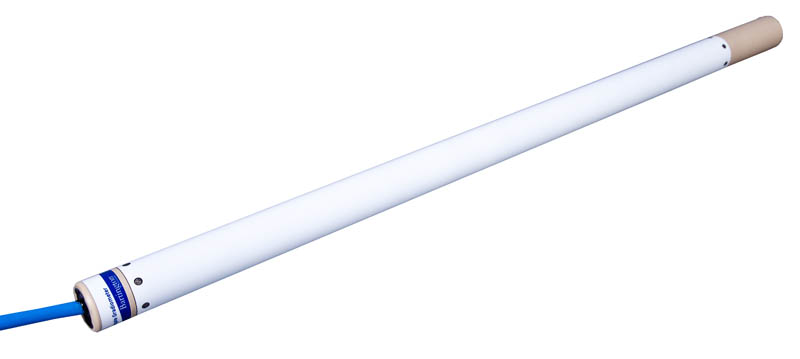May Product Spotlight - Bartington

New magnetic field gradiometer for underwater detection
Bartington Instruments has used its 20 years of experience designing and manufacturing magnetic field measuring instruments to develop the new Grad-13 digital gradiometer in order to detect vectorial information of sub-nanotesla features. It is suitable for mineral exploration, pipe and cable location, archaeology, and the detection of unexploded ordnance and other magnetic anomalies.

With RS485 output to ease integration with the customer’s systems, the Grad-13 can acquire magnetic field data at a rate of 200 points/second, with a precision down to 30 pTrms/√Hz at 1 Hz. Accuracy is enhanced by an inbuilt temperature sensor, which allows compensation for any temperature drift in the readings, while an integral accelerometer gives the position of the instrument. It is available in versions submersible to 200 m. Bartington can also supply the necessary multiplexers and acquisition software that enables multiple Grad-13 sensors to be used as part of a sensor array, to build up an overall magnetic picture of a wide area quickly and efficiently.
The gradiometer’s non-contact, non-destructive principle of operation has no environmental impact. Two fluxgate magnetometers are installed at either end of a rigid carbon fiber frame in order to give magnetic field information at two known points. In a homogeneous magnetic environment, both sensing elements will give the same reading, keeping the gradient outputs close to zero. However, moving the gradiometer over a source of local magnetic variation will generate a larger change in the reading of the magnetometer nearest the disturbance. The gradient outputs will then give information about the strength, direction, and size of this anomaly.
This principle of anomaly detection opens up a wide range of applications. As ferrous materials interact strongly with their magnetic field environment, the Grad-13 can detect metallic objects in murky water or buried in layers of sediment. It is, therefore, ideal for locating pipes and detecting unexploded bombs and grenades in post-conflict zones. Variations of the seafloor can also cause local variations in the Earth’s magnetic field, so the Grad-13 can be used to map areas of interest for mineral exploration or to look for archaeological remains. In the case of locating buried electric cables, the Grad-13’s sensing bandwidth enables the detection of sub-100 Hz electromagnetic interference. To assist customers, the Grad-13 is supplied and calibrated with cables up to 500 m.
Like many of Bartington Instruments’ products, the Grad-13 was first developed to meet a particular need. In this case, it was for the same sensor to be used in three different settings: mounted on an ROV for seabed surveys, mounted on a non-magnetic cart for land surveys, and lowered down a borehole. The company’s R&D department excels at developing products to meet customers’ specific requirements, which has led to it being able to supply equipment in many different markets worldwide. Bartington Instruments offers a range of magnetic field fluxgate sensors for use in environments from the bottom of the sea to low Earth orbit and at temperatures from cryogenic to 215oC. It also offers related test equipment such as Helmholtz Coil Systems for calibrating and testing sensors and a range of magnetic shields.
For more information on the Grad-13 or to discuss how Bartington Instruments can meet your marine requirements, contact sales@bartington.com.

